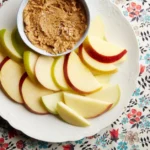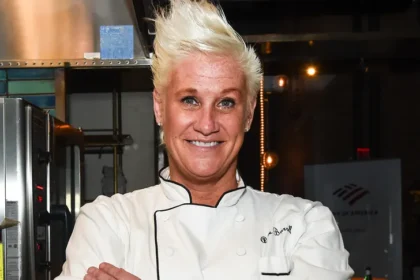If you’ve ever felt sluggish or dizzy while sticking to a vegetarian lifestyle, iron—or rather, a lack of it—might be to blame. The good news? You don’t need steak to get your daily dose. In fact, tons of plant-based powerhouses are bursting with this essential mineral.
Let’s break down the top vegetarian foods rich in iron, how to make the most of them, and how to naturally boost absorption. Whether you’re full-time plant-based or just dabbling in Meatless Mondays, this list is your ultimate iron guide.
🧠 Why Iron Is a Big Deal (Especially If You’re Veg)
Iron plays a crucial role in your body—it helps shuttle oxygen to your cells, supports brain function, and keeps your energy levels up. Without enough of it, you’re at risk for iron deficiency anemia, which can cause:
- Constant fatigue
- Weakness and dizziness
- Headaches and brain fog
- Pale skin and brittle nails
- Shortness of breath
The recommended daily allowance (RDA) for iron is:
- 8–18 mg per day for most adults
- 27 mg during pregnancy
- 9–10 mg for children and teens (age-dependent)
Since plant-based sources contain non-heme iron (less easily absorbed than the heme iron found in meat), vegetarians and vegans need to be extra savvy about what—and how—they eat.
🌱 Legumes: The Plant Protein Powerhouses
Legumes are the unsung heroes of the plant kingdom—not just for their fiber and protein, but also for their iron content.
Top Iron-Rich Legumes (Per 1 Cup):
- Natto (fermented soybeans) – 15.1 mg
- Tofu – 13.3 mg
- Soybeans (raw) – 9.1 mg
- White beans / Lentils – 6.6 mg
- Red kidney beans – 5.2 mg
- Chickpeas – 4.7 mg
- Black-eyed peas / Navy beans – 4.3 mg
- Tempeh – 4.5 mg
💡 Hot Tip: Fermented soy (like natto and tempeh) offers added digestive benefits and is easier for your body to absorb!
🥜 Nuts & Seeds: Tiny But Mighty Iron Sources
These crunchy snacks and smoothie bowl toppings do more than add flavor—they’re legit iron bombs.
Most Iron-Dense Nuts and Seeds (Per 1 Cup):
- Sesame seeds (whole) – 21 mg
- Pumpkin seeds – 11.4 mg
- Flaxseeds – 9.6 mg
- Cashews – 7.8 mg
- Pine nuts – 7.5 mg
- Almonds – 5.3 mg
- Macadamia nuts – 3.5 mg
✨ Bonus: Two tablespoons of tahini (sesame paste) offer about 1.3 mg of iron and are amazing in dressings, dips, or on toast.
🥦 Veggies That Pack a Punch
Leafy greens, roots, and even some mushrooms can help you get closer to your daily iron goal.
Top Iron-Rich Vegetables:
- Spinach (cooked) – 5.7 mg per cup
- Palm hearts – 4.6 mg per cup
- Swiss chard (cooked) – 3.9 mg per cup
- Beet greens – 2.7 mg per cup
- White mushrooms (cooked) – 2.7 mg per cup
- Sun-dried tomatoes – 2.5 mg per ½ cup
- Tomato paste (¼ cup) – 2 mg
- Baked potatoes (with skin) – 1.9 mg per large potato
- Brussels sprouts – 1.8 mg per cup
🍅 Pro Tip: Vitamin C helps your body absorb non-heme iron—so toss those leafy greens with some lemon juice or pair them with oranges or bell peppers!
🍇 Surprising Fruits That Are Iron-Rich
Fruit isn’t the first place you look for iron, but some varieties are stealthy superheroes.
Top Fruit Sources of Iron:
- Black olives – 8.5 mg per cup
- Prune juice – 2.9 mg per cup
- Mulberries – 2.6 mg per cup
🥤 Fun Fact: Just one glass of prune juice gives you more iron than a serving of chicken!
🌾 Whole Grains That Deliver
Whole grains beat refined carbs when it comes to nutrient content—including iron.
Top Iron-Packed Grains (Cooked, Per 1 Cup Unless Stated):
- Amaranth – 5.2 mg
- Spelt – 3.24 mg
- Quinoa – 2.8 mg
- Oats – 2.1 mg
- Fortified Cheerios – 8.1 mg per cup
- Special K – 8.7 mg per cup
📣 Quick Tip: Many cereals are fortified—check labels and aim for 45% DV or more for max benefit.
🍫 Other Unexpected Iron Sources
These don’t quite fit in the typical food groups, but they deserve a shoutout.
- Dark chocolate (70–85%) – 3.4 mg per oz
- Blackstrap molasses – 1.9 mg per 2 tbsp
- Dried thyme – 1.2 mg per tsp
🍫 Yes, chocolate lovers—your treat just got a health halo!
🧪 How to Absorb More Iron from Plants
Getting enough iron isn’t just about what you eat—it’s also how you eat it.
5 Proven Ways to Boost Non-Heme Iron Absorption:
- Pair with Vitamin C: Think strawberries + oats, or peppers + lentils.
- Avoid Coffee/Tea with Meals: Caffeine can block absorption. Save your sip for an hour later.
- Soak, Sprout, Ferment: Prepping legumes this way reduces phytates (which inhibit absorption).
- Cook in Cast Iron: Foods absorb a bit of the pan’s iron—especially acidic items like tomato sauce.
- Eat Protein-Rich Foods: Lysine (in beans, quinoa) improves absorption.
🧠 FAQs
Q: What food has the most iron overall?
A: Iron-fortified cereals top the list—up to 16.2 mg per serving!
Q: What are the top 10 iron-rich foods?
- Fortified cereals
- Oysters (for non-veg)
- Cooked spinach
- Mussels (for non-veg)
- Jerusalem artichokes
- White lima beans
- Hyacinth beans
- Soybeans
- Swiss chard
- Duck breast (for non-veg)
✅ The Takeaway
Being plant-based doesn’t mean skimping on iron. In fact, with the wide variety of legumes, seeds, greens, grains, and clever cooking tricks available, you can meet—and even exceed—your iron needs deliciously.
The next time someone asks, “But where do you get your iron?”—you’ll be ready to rattle off a list of tasty, nutrient-dense foods that prove going meat-free doesn’t mean energy-free.














